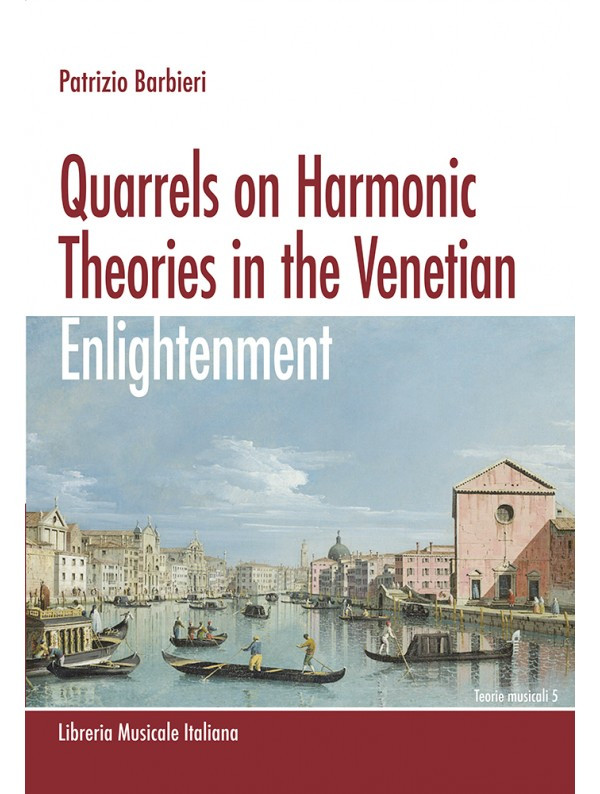-
MenùTornare
-
Metodi per Strumenti
-
-
-
-
-
-
-
-
-
Spariti chitarra
-
-
-
-
-
-
Spartiti Pianoforte
-
-
-
-
-
-
-
-
-
-
-
-
Quartetti & Combo
-
-
-
-
-
Strumenti Diversi
-
-
-
-
-
-
-
-
-
- Raccolte e Real Books
- Best Seller
-
Altro
-
-
Account
-
-
Carrello
Il Carrelli è vuoto.
Quarrels on Harmonic Theories in the Venetian Enlightenment
Edizioni LIM, 2020
Collana: Teorie Musicali
In the second half of the 18th century the harmonic theories of the Venetian Enlightenment − its standard-bearers being Francesco Antonio Calegari, Francesco Antonio Vallotti and Giuseppe Tartini − aroused major quarrels at a European level, owing particularly to their inevitable collision with those of Jean-Baptiste Rameau, two of whose innovations in any case they had earlier discovered...
Part I, comprising six chapters, deals with theories on the basis of harmony and the generation of chords, i.e. those that best characterise the contribution of the Paduan School and Tartini. five chapters of Part II, tackle the age-old problem of the theory of consonance, up to the innovative theory of Andrea Draghetti (1771) and, in his wake, that of Filippo Foderà (1831–37), a so-far-forgotten author who managed to calculate a continuous curve of consonances almost identical to the famous one produced in 1863 by Helmholtz.
👍 Acquista su Birdland
Soddisfatti o rimborsati, ogni nostro prodotto è con consegna immediata e garantita.

Sul nostro Store puoi acquistare con App18 e Carta del Docente

Edizioni LIM, 2020
Collana: Teorie Musicali
In the second half of the 18th century the harmonic theories of the Venetian Enlightenment − its standard-bearers being Francesco Antonio Calegari, Francesco Antonio Vallotti and Giuseppe Tartini − aroused major quarrels at a European level, owing particularly to their inevitable collision with those of Jean-Baptiste Rameau, two of whose innovations in any case they had earlier discovered...
Part I, comprising six chapters, deals with theories on the basis of harmony and the generation of chords, i.e. those that best characterise the contribution of the Paduan School and Tartini. five chapters of Part II, tackle the age-old problem of the theory of consonance, up to the innovative theory of Andrea Draghetti (1771) and, in his wake, that of Filippo Foderà (1831–37), a so-far-forgotten author who managed to calculate a continuous curve of consonances almost identical to the famous one produced in 1863 by Helmholtz.
Product Comments
error Non è stato possibile inviare il tuo giudizio sulla recensione
feedback Segnala commento
check_circle Segnalazione inviata
error Non è stato possibile inviare la tua segnalazione
Scrivi la tua recensione
check_circle Recensione inviata
error Non è stato possibile inviare la tua recensione
8 altri prodotti della stessa categoria:
Carrello
Il Carrelli è vuoto.
Account
-
MenùTornare
-
Metodi per Strumenti
-
-
-
-
-
-
-
-
-
Spariti chitarra
-
-
-
-
-
-
Spartiti Pianoforte
-
-
-
-
-
-
-
-
-
-
-
-
Quartetti & Combo
-
-
-
-
-
Strumenti Diversi
-
-
-
-
-
-
-
-
-
- Raccolte e Real Books
- Best Seller
-
Altro
-
















